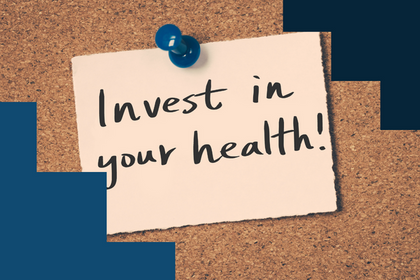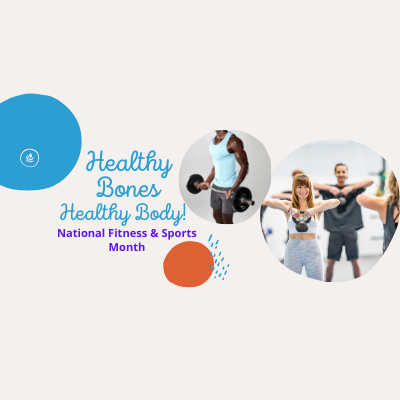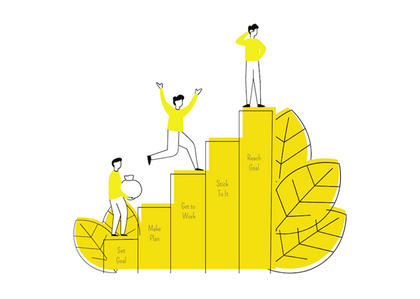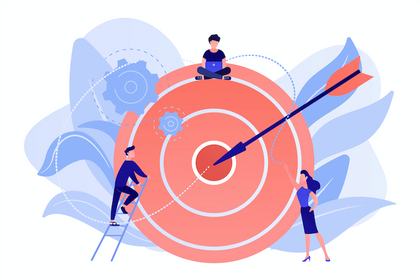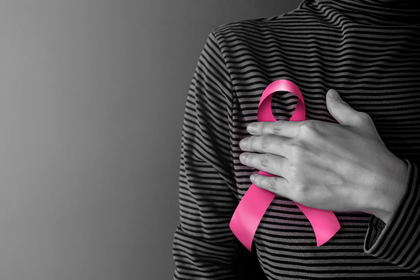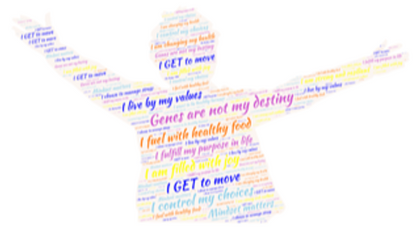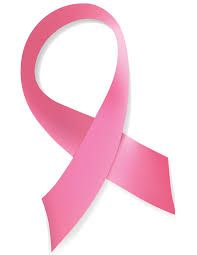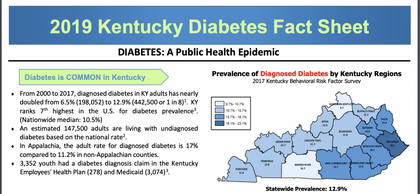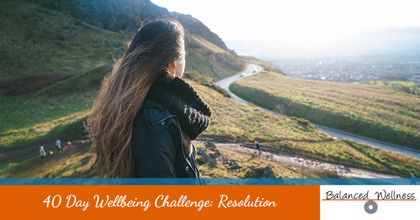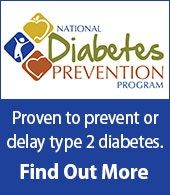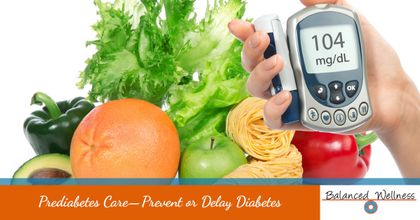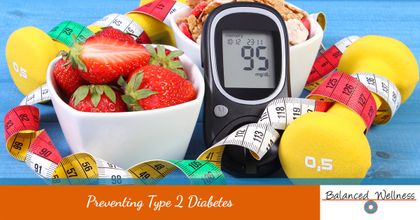Self Care
Our Blog Categories
Your Health, Your Responsibility
Hal Elrod wrote, “The moment you take responsibility for everything in your life, is the moment you can change anything in your life.”
moreSelf-Monitoring
Many view life as an uphill battle, believing and living like “aging” means less energy, an achy body, memory loss, etc. What if instead we viewed life as a constant and consistent opportunity to grow, to improve, and to THRIVE? To thrive in our relationship with ourselves – body and mind – just as we can thrive in relationships with others. We get one body and one mind– so why not give them the love and attention they deserve to grow?
moreThe Patient/Provider Relationship
Trust is the foundation for any healthy relationship, and the relationship between you - the patient - and any medical provider is no different. We not only entrust our medical providers with our health, but sometimes with our life, thus requiring complete transparency, full disclosure, and open dialogue.
moreHow important are annual check ups?
Fall often calls for routine provider visits– why? Children going back to school, sports physicals, work physicals, and annual care check ups are just a few reasons!
moreCancer Screenings for Men
Men and women are both at risk for developing cancer, but statistics show that men are more likely to be diagnosed with, and even die from, cancer. Skin cancer is the most common type of cancer in men, closely followed by prostate, colorectal, and lung cancers. These cancers typically take years to develop, and even though physical symptoms of these cancers may also take years to present themselves, regular screenings detect dangerous changes in the body, which in turn, may save your life or the life of someone you love!
more5 Heart Healthy Habits for Men
Cardiovascular disease is an unavoidable topic in the wellness industry, so we cannot continue to avoid how our everyday habits impact our heart health.
moreWorld Diabetes Day
World Diabetes Day is November 14th, and the International Diabetes Foundation (IDF) created this opportunity to “call on policymakers to increase access to diabetes education to help improve the lives of the more than half a billion people living with diabetes worldwide.” Whether you are someone living with diabetes, or you know someone who is, the following is a list of resources and strategies to learn, prevent, and engage more!
moreHabits of the Heart
There’s constantly talk about habits, isn’t there? Healthy habits. Unhealthy habits. Breaking a habit. Creating a new habit. So much TALK… but sometimes, if we are honest, there is not so much ACTION. As the new year turns, we begin our journey determined to hit a new goal. Sometimes we receive a health diagnosis and commit to making nutritional changes. Or– we even see a picture of ourselves and are anything but thrilled with our appearance, motivating us to go to the gym.
This month, especially, we have discussed significant health concerns regarding your heart, cancer risks, and next week, your relationship with food. We are constantly giving you information meant to change your behavior, right? The point is, there is almost always some kind of event that triggers us into action. Yet, for some reason, that action is short-lived more often than it is successful and long-term. Where is the disconnect?
The “disconnect” is simple. Creating healthy habits that support our goals of living a long life is more than just action, AND it’s more than the trigger. Our habits are created by our thoughts, beliefs, and actions. Consider this:
“Your thoughts produce your feelings, which generate your actions, which cause your results.” Your results reinforce your initial thoughts, then create self-fulfilling prophecies. As humans, once we develop or witness enough evidence over and over again, once we prove ourselves right enough, those originating thoughts then become beliefs… which drive your feelings, which drive your actions, which lead to your results.
moreCancer… It Isn’t Something You Should Ignore.
Cancer – a word no one wants to hear, but something no one should ignore. With almost two million new cases and over 600,000 cancer-related deaths in the United States in 2020, cancer demands our attention. It demands our energy and awareness. But, it also calls us to tackle healthy lifestyles as a prevention strategy, a “big picture” strategy in which we can all engage. As a company that is dedicated to inspiring individuals to achieve optimal well-being, it is our hope that you once again see the POWER of an overall healthy lifestyle as we discuss the overarching lineup of cancer prevention.
- Avoid tobacco in all forms, including exposure to secondhand smoke. Tobacco provides zero TRUE health benefits. (We are available for coaching if you need support in your quest to stop tobacco use.)
- Eat a whole foods diet, made up of a variety of fruits, vegetables, lean proteins, healthy fats, and whole grains, and the more plant-based the better. Nutrient dense foods (whole foods with little to no processing or added unnecessary ingredients) support your body’s ability to fight cancer with polyphenols, antioxidants, fiber, and a variety of other vitamins and minerals!
- Exercise regularly. Having a good sweat (consistently) can do more than help you achieve a healthy weight and increase your lean muscle mass (which yes, these are important for cancer prevention, too). Regular exercise has been shown to help reduce inflammation, boost the immune system, and can act as a healthy tool for stress management!
- Limit alcohol consumption to no more than an average of one drink a day. Many experts consider regular and excessive alcohol consumption to be one of the most important preventable risk factors for cancer, as it causes inflammation, affects hormones directly related to certain cancers, damages cells, and can lower inhibitions that may lead to making additional unhealthy choices. The risks from alcohol far out-weigh any benefits you may hear about.
- Avoid unnecessary exposure to radiation and industrial and environmental toxins. The radiation from medical imaging and sunlight and various toxins from certain environments can damage our cells and our body’s ability to fight invaders, also known as free radicals or cancer-causing agents. Talk with your doctor about which medical images are necessary – Wear sunscreen – Utilize proper protective equipment when around potential toxins! And, a reminder that electromagnetic radiation and radiofrequency radiation do NOT cause cancer.
- Practice safe sex and avoid risky behaviors (such as sharing needles, etc), which can help you avoid infections that contribute to cancer.
- Make quality sleep a priority. Our body needs a reset – physically, mentally, and emotionally. The stressors of our daily lives, while they can be helpful in moving us forward, they still cause stress on our systems. Just like stress can keep us mentally and emotionally distracted, it can also “distract” our physical systems from working properly. Sleep can help us reset and renew.
- Know your family history, be honest about your habits with your medical providers, and get regular cancer screenings. An open and honest relationship with your doctor is a “best practice” for life. Avoiding conversations about certain habits, issues/pains, etc does nothing but potentially increase your risk for the development or progression of cancers, as well as other health concerns. Make a point to ask questions so at the end of the day, you feel empowered, equipped, and supported in your health journey!
Healthy Bones, Healthy Body
Name this chronic disease: primarily associated with genetics, mechanical factors, and hormonal factors, as well as primarily in the older age groups…and resistance/strength training is a highly recommended therapeutic option.
It’s osteoporosis, the most common bone disease and is characterized by weakening of bone tissue, bone structure, and strength, and may lead to an increase risk in fractures. As the country’s largest population ages, more and more women and men are experiencing the effects of osteoporosis, whether from a small fracture or debilitating injury. And while a certain about of “bone loss” is irretrievable, so much can be done to prevent, maintain, or even reverse it.
Strength training is a proven therapeutic option for the preservation of bone and muscle mass. But not all strength training is created equal. With so many factors (not just genetics) impacting one’s risk of developing osteoporosis, it is recommended that everyone participate in some sort of strength program. Nothing too complicated, just intentional. Use the FITT principles!
moreSmall Action Steps Result in Big Results
5 Actions! Apply these to our Take 5! Program
I really enjoy listening to national Coaching Professional Jack Canfield talk about how Small Steps Make Big Changes…a principle I definitely believe in. He encourages you to take 5 actions each day and making them non-negotiable. 5 actions for our Take 5! Program; I like it!
We are looking at the last part of our ‘VMOSA’ series.
Vision | Mission |Objectives (Goals) | Strategies | Actions
We began this month by having you not state your vision for what a ‘healthy’ lifestyle would allow you to do or what your life would look like. Have you started to realize some of the vision beginning to happen? We KNOW it is difficult to make lifestyle behavior change, but consistency and keeping that vision in sight is a great way to focus. When the scale isn’t moving, you may feel some of the benefits of your actions– decreased bloated feeling, increased energy, ability to exercise longer, and the list goes on.
We know that without a plan, the vision is far less likely to happen! THAT is why we suggest that you don’t move in circles but set a target (objective) and move toward it. When the movement is done strategically, you will be far more likely to keep moving toward the target behavior. The final step of the strategic plan is to create actions. A comprehensive action plan includes clearly stating what actions will happen, who will do the actions (usually you, but may include a buddy), a specific date (may be a specific workout appointment on a calendar), what resources you will need, and any areas of resistance you may come across AND how to overcome those challenges. I really believe this is one of the key pieces for ‘chronic resolution setters’. Identify WHAT has previously gotten in your way during other efforts. This is also where the growth mindset is very valuable — failure is not bad IF you grow from the experience! A wellness coach can also really help, serving as someone to help you recognize and brainstorm how to overcome the challenges and obstacles you face, all while providing encouragement and a BIG dose of accountability mixed with understanding.
moreStrategies for Success
Strategies for Success
Stepping down from objectives to strategies is our next focus this month! Having a BIG vision, refined by a smaller objective to target for (goals), turns into success when we state and implement strategies and systems. If we fail to plan out our changes, we are planning to fail! At the beginning of the month, we asked you to brainstorm some actions… look back through those actions and see which ones align with a strategy you can put into place to achieve your objectives. Remember these definitions? Strategies (the how) & action plan (what change will happen). Let’s look back at the 5 objectives in the Take 5! Program:
- 1. Eat Whole Foods
- - Strategy: Meal planning
- 2. Drink 64 Ounces of Water (General guideline)
- - Strategy: Use a water bottle and keep with you at all times
- 3. Eat 4-6 Servings of Vegetables Per Day (Some recommend up to 9 fruits and vegetables)
- - Strategy: Start your meal with a salad or soup
- - Strategy: Fill half your plate with vegetables
- 4. Exercise! (There are SO many! Hanging clothes on your treadmill is not one of them.)
- - Strategy: Join a class! Or Get a workout buddy.
- - Strategy: Put it on your calendar
- 5. Be Mindful (We believe this is the key to the program–mindfulness and mindset.)
- - Strategy: Wake up 5 minutes early and listen to music
- - Strategy: Journal
“O” is for Objective
“O” is for Objectives!
Objectives–Don’t keep going in circles, move toward your goals!
While I don’t want to get stuck in word semantics, I do think it is important to recognize why we use objectives, rather than goals. Goals typically refer to the general outcome you want to achieve, such as losing weight. Objectives, on the other hand, are more specific and may utilize the SMART acronym (Specific, Measurable, Attainable, Realistic and Time Sensitive.) BUT, again, don’t let that trip you up!
We have talked about the vision – your dream of what you would like your life to be, and we have discussed the mission…some would say that the vision is the dream while the mission is the what and why. But, for purposes of this conversation, let’s keep the positive vision of where you are going in view and why you want to go there. For example, I want to live a healthy life so I can continue to do physical activities with my family as I age. The vision can expand deep into what you want to feel like, where you go, how you look, what you do when you are healthy – the possibilities are endless! Last week’s assignment should have been fun! Not tedious. Now the real work begins – how are you going to get there?
moreSolid Foundation: Big blocks are Stronger than Bricks
No matter what modality you choose for strength training, the principle is always the same – overload! However, you must do so with a strong foundation… here’s what I mean by that; LARGE MUSCLE exercises give you the best foundation for a successful program. And, best of all, you can use your body weight! Rather than complicating strength training, start with a strong but simple foundation. Could six exercises work your entire body? YES! And better yet, it’s simple and doesn’t take an hour in the gym.
moreCancer - Know Your Risks!
Did you know that only about 15% of cancer cases are due to heredity? As shocking as that statistic may be, it can be considered as good news to many of us––meaning that the other 85% of cancer cases are primarily due to our health and lifestyle habits. Essentially, YOU are your best chance at preventing cancer!
moreBonus Benefits: Reducing Blood Pressure Benefits Overall Health
It’s no secret that everybody enjoys a bonus. Monetary bonuses are great and perks and prizes are fun, but just how much more valuable do we deem a health and well-being bonus? This week, we’re focusing on how you can improve your overall health and all the bonuses that come along with it! A big example that comes to mind when discussing this topic is weight loss or other health measurements such as blood pressure. When you have high blood pressure (also known as the silent disease), you are damaging other areas of your health and body, thereby increasing your risk of additional chronic illnesses.
Lifestyle versus medication. Sure, you can take a blood pressure medication, but that won’t necessarily impact your weight OR other chronic conditions. It may be necessary, but combined with the advice of your physician, we encourage a lifestyle change first. For example, a simple lifestyle option to try could be reducing processed foods. When you reduce processed foods you greatly decrease your salt and sugar intake and decrease your refined carbohydrate (low fiber) intake. This will not only impact your blood pressure, but also your risk of diabetes, heart disease, gut issues and more! Read more lifestyle ways to lower your blood pressure.
more20/20 Vision to Reduce Chronic Illness
As we close August and move into September, we would like to focus on our last look at mindset using the 20/20 analogy. Did you know that 20/20 vision does not mean perfect vision? Rather than testing for perfection, it instead tests for clarity and sharpness. Using the 20/20 analogy, let’s get a clear and succinct vision of our risk for chronic illness and HOW we can change our mindset to improve our physical health.
moreBreast Cancer Awareness
Breast Cancer Awareness Month
Did you know that 1 in 8 U.S. women will develop invasive breast cancer over the course of her lifetime? (www.breastcancer.org)
What does it mean for cancer to be invasive? Noninvasive? What are the warning signs? So many questions surround the disease because almost everyone knows someone that’s been affected, but no one knows how to prevent it 100%. There is no cure. During the month of October, we’ll be focusing on a variety of health behaviors that have been shown to be linked to breast cancer in some way.
Below is a general overview of the disease and some definitions that may help you understand the different types women may have.
- Non-invasive breast cancer is contained to the ducts or lobules of the breast.
- Invasive breast cancer has traveled outside the milk duct and into the breast tissue.
Which type a woman has will determine the treatment process.
Warning signs include a lump or mass in the breast, skin irritation (appearing red, scaly, or thickened), breast pain, or nipple discharge (www.cancercenter.com). While these are visible from the outside, there are also symptoms that manifest internally and may not be immediately noticeable. This is why it’s important to see your health care physician regularly!
more2019 KY Diabetes Fact Sheet
Diabetes is COMMON in Kentucky
- From 2000 to 2017, diagnosed diabetes in KY adults has nearly doubled from 6.5% (198,052) to 12.9% (442,500or 1 in 8)1. KY ranks 7th highest in the U.S. for diabetes prevalence3. (Nationwide median: 10.5%)
- An estimated147,500adults are living with undiagnosed diabetes based on the national rate2.
- In Appalachia, the adult rate for diagnosed diabetes is 17% compared to 11.2% in non-Appalachian counties.
- 3,352 youth had a diabetes diagnosis claim in the Kentucky Employees’HealthPlan (278) and Medicaid (3,074)3 .
Download the full 2019-KY-Diabetes-Fact-Sheet.
Cut your risk of diabetes by more than 50%, Join our Virtual Lifestyle Prevention Class. Coaching at your finger tips.
Diabetes Lifestyle Prevention Class
more40 Day Wellbeing Challenge: Resources
Balanced-Wellness-Bookmark-Final-5a4525fb271c8 Ladies- this is the bookmark with value words.
KISS Nutritional Guidelines
Wellness Wheel Your wellness vision
Faith-based Wellness Wheel
Week 1: Evaluate
Romans 12:2 Do not be conformed
2Corinthians 13:5 Examine yourself
Psalm 139:14 Wonderfully Made
1 Corinthians 6:19 Honor God with your Body
2 Corinthians 5:9 Please Him
Ephesians 4:24 Put on a new self
Luke 9:23 Pick up your cross daily and follow him
Week 2: Focus on His Kingdom
Matthew 6:31-33
2 Thess 1:11-12
Gal 5:16
Psalm 86:11
Deut 4:1, 5; 30:16
Galatians 1:10
1 Peter 1:13-16
Week 3: Resources - Firm Resolve
1 Cor 10:13
James 1:13-15
Luke 4:1-13
Matthew 4:1-11
Psalm 18:19
Romans 6:14
James 1:2-4
Week 4: Re-frame - Dig Deep for Strength
Philip 4:13
Jer 33:3
Psalm 28:7
Psalm 31:2, 3
Col 1:10-12
Romans 14:17
Psalm 51:12
Week 5: Reach Out
Week 6: Re-juvenate - Emotional Well-being
Col 3:12
2 Thes 1:11
Acts 9:17
Ephesians 4:25
moreComplete Care Solution
Introducing the Complete Care Solution
In the past 20 years, we have seen an ongoing paradigm shift towards preventive-health and well-being. Meanwhile, healthcare is getting more difficult to navigate and more expensive to use. Over 95% of Americans cannot accurately define common healthcare terms like copay, coinsurance, and out-of-pocket maximum. Average wait times for physicians have soared 30% in the last 5 years.
We combine white-glove concierge health advocacy, a superior solution for telemedicine and a state-of-the-art Wellness Platform for preventative health. Complete Care helps your employees best use their benefits.
Telemedicine + Advocacy + Wellness = Complete Care Solution
Health-related and wellness benefits impact medical costs AND employee productivity, presenteeism, retaining and attracting superior talent.
According to the SHRM 2018 Employee Benefits Report “benefits are powerful and can either cost or save an organization a substantial amount of money associated with turnover”. More than one-third (34%) of the organizations surveyed increased their benefits with the hope of recruiting (58%) and retaining employees (72%). Of course benefits include much more than health-related and wellness benefits, but yet, these were the two areas organizations were more likely to increase their benefits. According to the study, 55% of the organizations increased their health-related benefits and 44% increased their wellness offerings.
more40 Day Wellbeing Challenge: Resolution
Spirituality can be defined as your values, purpose in life, and what you do to define and find resolve within your goals. In week one, we touched on setting a firm foundation that is built on your values and your purpose in life – your inner being. We also touched on the importance of believing in who you are and not trying to be someone you are not. Taking the time to properly reflect on these issues is a crucial part of an effective wellness program and any lasting change.
more40 Day Wellbeing Challenge
Tired of setting New Year’s Resolutions only to forget all about them before the year is half over? Take a meaningful step toward change — join our wellness program!
At the start of a new year, many of us are inclined to reflect on the past year, our lives, successes, failures, and areas we would like to improve. However, simply relying on the turn of the calendar to motivate us to make improvements is typically not enough to shed all of our bad habits. This is especially true for health and wellness goals.
If you have fallen short of your New Year’s aspirations or are not seeing the results you expected, we have just the thing you need to re-set your goals — the 40-Day Wellbeing Challenge.
morePrevent T2 Online Program
Offer a ‘Class Zero’ to your organization to promote the program.
moreSigns of Diabetes—Type 2 Diabetes Risk Factors
Diabetes is a disease that affects 30.3 million people—roughly 7.2 million of which are undiagnosed. Your chance of developing type 2 diabetes is dependent upon a combination of factors related to both your genes and lifestyle. Though you cannot change your hereditary risk for this incurable disease, you can take a big step toward prevention by adjusting your lifestyle risk factors, such as eating and exercising habits.
As we mentioned before, over 84.1 million adults in the U.S. have prediabetes, and 90% of these people are unaware that they are at risk. As wellness coaches and health experts driven by the goal of helping all individuals achieve their optimal wellness, we at Balanced Wellness strive to do all we can to address type 2 diabetes. Learn about our Prevent T2 Program here, and read on to learn about some of the risk factors.
moreLiving Well with Prediabetes—Prevent or Delay Diabetes
If you have been diagnosed with prediabetes, know that you are not alone—it’s a disease that affects 84.1 million Americans. Being diagnosed with prediabetes does not necessarily guarantee the advancement of type 2 diabetes. Through a balance of healthy eating, exercising, and lifestyle choices, it is possible to prevent, delay, and—some believe—even reverse the progression of diabetes.
As a group of passionate wellness coaches and health experts, Balanced Wellness is committed to helping all individuals achieve their optimal well being. In our last blog, we talked about diabetes prevention and how healthy lifestyle changes can greatly reduce your risk of getting diabetes. In this blog, we would like to turn our focus to discussing those lifestyle changes and how we can assist in your journey.
morePreventing Type 2 Diabetes
Type 2 diabetes is a chronic disease that affects your body’s ability to keep blood sugar at a normal, healthy level. According to the CDC, it is the seventh leading cause of death in the U.S., and in the last 20 years, the number of adults diagnosed with diabetes has more than tripled.
Though some people are genetically predisposed to type 2 diabetes, by and large, it is a disease that is preventable through healthy lifestyle choices. At Balanced Wellness, we are committed to helping people get the information and support they need to accomplish this change and maintain a healthy, diabetes-free life.
Read on to learn about prediabetes and preventing type 2 diabetes from becoming a part of your life.
moreAddressing Chronic Diseases Through Total Wellness
After 30 years of experience in the health and wellness industry, it’s easy to feel like a broken record, repeating the same things over and over. For several years, we have known that many chronic illnesses could be mitigated—and possibly even outright eliminated—by simply modifying behavioral risk factors. For example, according to a journal in the Journal of American Medical Association (2005), the “actual causes of death” are:
- Tobacco
- Poor diet and physical inactivity
- Alcohol consumption
However, despite the vast wealth of information regarding this subject, we are actually seeing more and more people succumb to the pernicious effects of these lifestyle choices. Beyond the deaths associated with these behaviors, chronic illnesses and quality of life are greatly impacted as well. In fact, in the U.S., chronic diseases account for 86% of all medical claims.
As we mentioned, what makes this issue so troubling is the fact that many of these chronic diseases could be prevented, delayed, or alleviated through lifestyle changes. In fact, according to this study by the Partnership to Fight Chronic Disease, if Americans were to eliminate these three risk factors we could prevent 80% of heart disease and strokes; 80% of type two diabetes; and 40% of cancer.
moreWhat Is Biometric Screening?
In short, you could say that biometric screening is a 15-20 minute health screening that could have life-changing—and even life-saving—results. With a few measurements and a simple prick of the finger, a biometric screening—is produced, providing vital information regarding an individual’s risk for certain diseases and conditions.
Biometric screenings are just one of the ways we at Balanced Wellness strive to create a healthier, more informed, and balanced society. With over 30 years of experience in the wellness industry, our goal is to provide comprehensive, yet cost-effective and easy to understand, health and wellness programs. Biometric screenings are an integral part of this effort. The results of these screenings help us determine the overall health of a company, and provide us with objective measurements, from which we can create a comprehensive program and closely measure its efficacy. This helps us not only improve corporate wellness, but it also pushes us closer to our goal of helping each individual achieve and maintain their optimal wellness.
Still unsure what biometric screening entails? Read on to find out more.
morePrevent T2 Program
Virtual Program! Meet where you are! Individual monthly coaching and weekly virtual class.
Next Program begins in June.
Schedule a ‘Class Zero’ at your organization to inform participants about the program.
more
